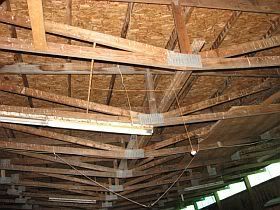structurebeton
Structural
A client did some "custom" floor trusses with simpson "MP-36" and "MP-24" mending plates. The plates very specifically say that they are NOT to be used for trusses.
I have to verify the trusses. Any one has had any experience in using these plates as truss connectors?
The client did install nails through the plates "to make sure it stay in place"...
Any thoughts?
I have to verify the trusses. Any one has had any experience in using these plates as truss connectors?
The client did install nails through the plates "to make sure it stay in place"...
Any thoughts?

